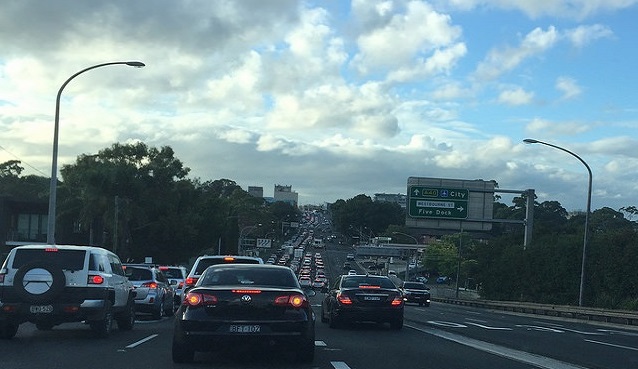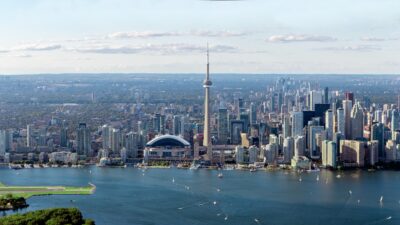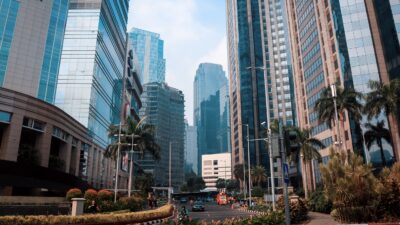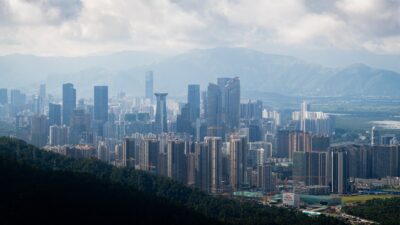Matthew Beck and Michiel Bliemer

Do more roads really mean less congestion for commuters?
Congestion is a major source of frustration for road users and has worsened over time in most cities. Different solutions have been proposed, such as introducing congestion charging (a favourite of transport economists) or investing in public transport. One solution that is most often put forward is to build more roads, but does this approach work?
A 2014 study in the United States identified Los Angeles, Honolulu and San Francisco as the top three most gridlocked cities in the United States. All of these cities use almost exclusively road-based solutions to transport citizens.
While China has increased its expressway network from 16,300 km in the year 2000 to around 70,000 km in 2010, the average commute time in Beijing for 2013 was 1 hour and 55 minutes, up 25 minutes from just the year before.
Why, then, do residents of these cities with large amounts of road capacity, not live in a driving utopia?
Induced demand
The first concept you need to get your head around is called induced demand.
Think about the street on which you live. If a new road makes driving to work quicker, you may benefit from that, but this reduced travel time might be enough to encourage two other people in your street to start driving; and two more people in the next street; and two more people in the street after that; and so on. Very quickly the drive to work takes just as long as it ever did.
In transportation, this well-established response is known in various contexts as the Downs-Thomson Paradox, The Pigou-Knight-Downs Paradox or the Lewis-Mogridge Position: a new road may provide motorists with some level of respite from congestion in the short term but almost all of the benefit from the road will be lost in the longer term.
Further, while more roads may solve congestion locally, more traffic on the road network may result in more congestion elsewhere. In Sydney, for example, the WestConnex may improve traffic conditions on Parramatta Road, but may worsen congestion in the city.
Weakest links
Congestion is determined by the weakest links in the road network. If road capacity expansion does not involve widening of these bottleneck links, congestion may simply move to another part of the network without solving the congestion problem. Moreover, it could potentially make congestion even worse.
The Braess Paradox is a famous example in which building new roads in the wrong location can lead to longer travel times for everyone, even without induced demand, because such new roads may lead more car drivers to the weakest links in the network. The reverse may also be true: removing roads may even improve traffic conditions.
This paradox occurs because each driver chooses the route that is quickest without considering the implications his or her choice has on other drivers. Car drivers only care about the number of vehicles in the queue in front of them and do not care about vehicles queueing behind them. This is a classic problem in game theory, very similar to the type for which John Nash was awarded a Nobel Prize.
What does the data say?
One US study has shown a strong relationship between the amount of new road length and the total amount of kilometres travelled in US cities, a finding the authors of that study termed “the fundamental law of road congestion”.
Similar findings are reported in Spain and in the United States, where even major road capacity increases can actually lead to little or no reduction in network traffic densities. It has also been found to exist in Europe, where neglecting induced demand has led to biases in appraising of environmental impacts as well as the economic viability of proposed road projects.
In Sydney, there is similar evidence from traffic volumes crossing the harbour. The Sydney Harbour Bridge was carrying a stable traffic volume of around 180,000 vehicles per day from 1986 to 1991. The Sydney Harbour Tunnel opened in 1992, and the total volume of traffic crossing the harbour increased in 1995 to almost 250,000 vehicles per day. This 38% increase in traffic can be attributed to induced demand and not to population growth (which was around 4% during this period).
Empirical observations have also confirmed the existence of the Braess Paradox. For example, in 1969 a new road was built in Stuttgart, Germany, which did not improve the traffic conditions. After closing the road again, congestion decreased.
Similar observations in which road closure led to improved traffic conditions have been observed in New York City, where upon closing 42nd street (a major crosstown street in Manhattan) it was observed that traffic was significantly less congested than average.
A 2014 experimental study confirmed that this paradox still exists by showing that expanding road capacity can result in worse traffic conditions for everybody.
The theory of induced demand is accepted by a large majority, but not by everyone.
For example, authors of a 2001 paper have argued that induced demand does not exist. However, UK researchers Goodwin and Noland have criticised this study.
In isolation, building more roads can certainly improve traffic conditions but these effects may only be local and only in the short run. Congestion may become worse in other parts of the network and experience shows that spare road capacity is quickly filled up with new cars.
Even without the extra road users that new roads create, if the new roads are built in the wrong locations congestion may actually become worse simply because of the way people behave. Roads alone do not solve congestion in the long term; they are only one (problematic) tool in a transport management toolkit.
This article was originally published on The Conversation. Read the original article.
Image: Simon_sees
Matthew is Professor of Decision Making and Choice at The University of Sydney Business School in the Institute of Transport and Logistics Studies. His research focusses on behavioural economics and modelling.
Michiel joined the Institute of Transport and Logistics Studies, at The University of Sydney, as Professor and Chair in Transport Network Modelling in early 2012. Before moving to Australia he was Associate Professor in Transport Planning at Delft University of Technology, and worked as a consultant at Goudappel Coffeng, the largest transport and traffic consultancy in the Netherlands.
Share
We believe in open and honest access to knowledge.
We use a Creative Commons Attribution NoDerivatives licence for our articles and podcasts, so you can republish them for free, online or in print.








